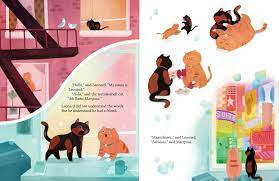"While fake news can be cheap and easy to
publish, real news is expensive. You have to
pay a news team to gather facts and check
them. Also, lots of real news can seem kind
of dry and boring. That's because the mission
of a news organization is to give facts and
information, not create excitement."
Isn't everyone concerned with internet safety these days? If we, as adults, have trouble figuring out what is real and what is fake in the news, how do we make sure that our kids have access to learning the truth? Kids are not going to read the newspaper. Knowing that, Joyce Grant sets out to help them (and us) become more media literate.
The book's design presents an introduction, six chapters, a conclusion, and back matter. The introduction asks a question about four headlines. Which one is fake? She goes on to wonder why people write stories that are not true.
" ... fake news spreads faster than the truth.
In fact, lies are 70 percent more likely to be
shared on Twitter than real news ... "
It's important to know the difference, and Ms. Grant spends the rest of the book helping her readers learn to spot real and fake news. Six chapters: Real or Fake, The Good Stuff, Whoops! Mistakes Happen, Not Quite Fake, Not Quite Real, Become An Investigator, and And Now the Good News! are sure to set readers on a path of discovery.
She writes about responsible journalism; in print on-air, or online. She offers ways to research sources, spot bias and errors, understand advertising, how a bit of the truth makes a lie more believable, and how to investigate by always being skeptical. She uses appropriate amounts of text to keep her readers interested, but not overwhelmed. Sidebars, blocked text, highlighted headlines, even conversations that mimic screen grabs engage and enlighten readers.
There is humor in the graphic illustrations, as there is in the text. The art adds context for more difficult concepts. This is a very important topic for middle grade classes. Sharing one chapter at a time, and providing time for student discussion and opinion will go a long way in helping kids learn what they need to know. Some concepts are not easy to digest; critical thinking is often encouraged. She also suggests skepticism and fact-checking before deciding if the information should be shared online.
Should we believe everything we read online. Of course not! Taking time to find out why is a great use of time spent today and every day. What and who can you trust? This fine book puts readers on the road to knowing.
Back matter features a glossary, an author's note, sources and an index.
Here are a few quotes from an interview with Joyce Grant concerning TKN:
We have now passed a decade producing kid-friendly news articles. The articles are written by me (Joyce Grant) and a small but incredibly dedicated group of professional journalists who volunteer their time. We also write original and interesting “Think & Discuss” prompts for every article and ensure that the site is understandable for kids, and that it’s relevant for teachers and homeschool parents.
Not only “teach kids the news,” but have them understand it, think critically about what they’re hearing, and then apply their knowledge to the real world. And then, maybe, go out and make a difference. Those kinds of critical thinking skills are more important that they have ever been.
https://teachingkidsnews.com/about/
























































